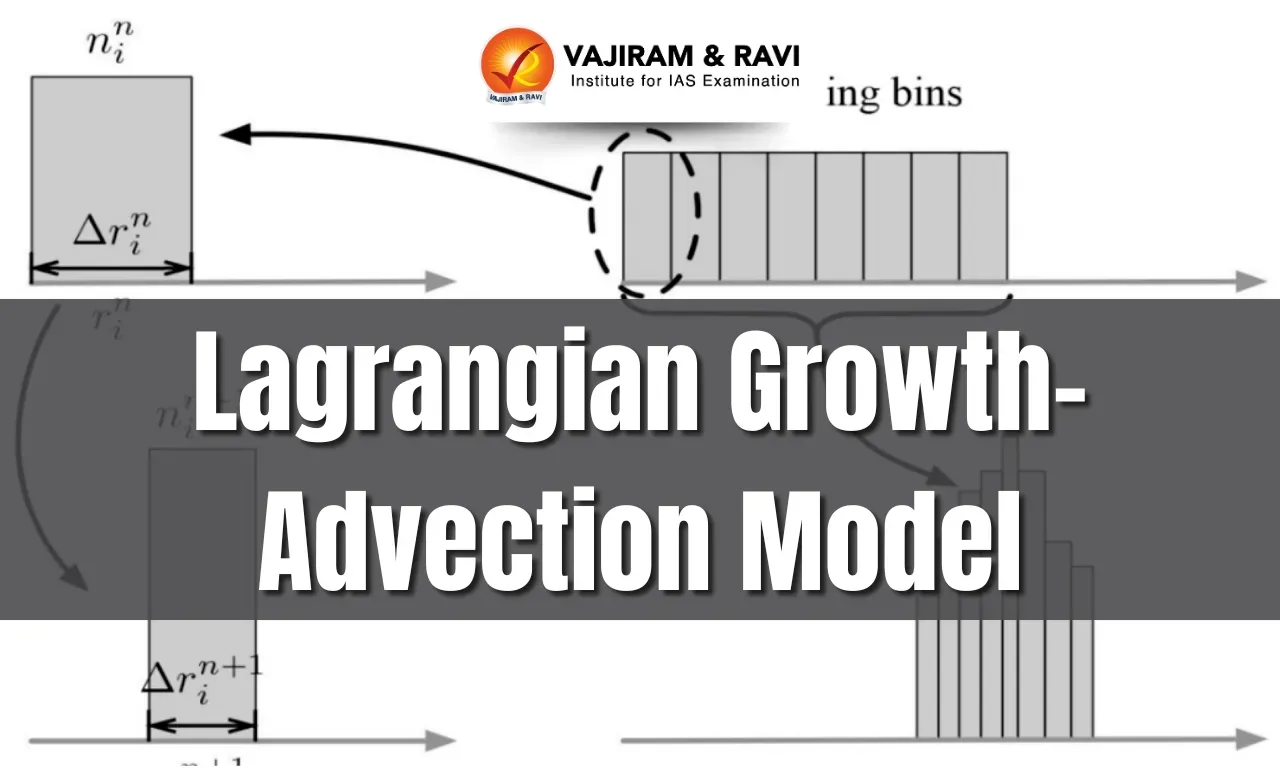Lagrangian Growth Advection Model Latest News
Researchers from the Monterey Bay Aquarium Research Institute (MBARI) and Florida State University have developed a new method to estimate oceanic carbon export using satellite data.
About Lagrangian Growth-Advection Model
- A Lagrangian Growth-Advection Model combines Lagrangian methods, which track individual fluid particles, with the concept of advection (the movement of a fluid) and growth (changes in a particle’s properties).
- It maps phytoplankton succession and carbon export by following surface ocean currents, particularly in upwelling regions like the California Current.
- Key Innovations:
- Incorporates spatial and temporal lags between carbon production and export.
- Accounts for zooplankton activity, ocean advection (movement of plankton), and biological succession.
- Does not rely solely on ocean color, providing a complementary alternative.
- Performance and Validation: The new model’s predictions matched results from deep-sea carbon monitoring, such as those at Station M (a long-term MBARI seafloor observatory).
- Pulses of carbon flux observed previously, unexplained by earlier models, are better captured by this approach.
- The ocean absorbs a significant portion of atmospheric CO₂, playing a key role in regulating Earth’s climate.
- Marine organisms convert dissolved CO₂ into organic carbon, which eventually sinks to the deep ocean, a process known as carbon sequestration via the biological pump.
- Existing satellite-based models depend primarily on ocean colour data, which measures phytoplankton productivity via surface chlorophyll concentrations. However, these models fail to account for subsurface and temporal lags in carbon transfer.
Lagrangian Growth-Advection Model FAQs
Q1. What is the Lagrangian Growth-Advection Model used for?
Ans. It is used in oceanography and climate modelling to simulate the movement and growth of biological or chemical tracers in ocean currents.
Q2. What does “Lagrangian” refer to in this model?
Ans. “Lagrangian” refers to tracking the movement of individual particles or water parcels as they flow with ocean currents.
Source: PHY
Last updated on January, 2026
→ Check out the latest UPSC Syllabus 2026 here.
→ Join Vajiram & Ravi’s Interview Guidance Programme for expert help to crack your final UPSC stage.
→ UPSC Mains Result 2025 is now out.
→ UPSC Notification 2026 is scheduled to be released on January 14, 2026.
→ UPSC Calendar 2026 has been released.
→ UPSC Prelims 2026 will be conducted on 24th May, 2026 & UPSC Mains 2026 will be conducted on 21st August 2026.
→ The UPSC Selection Process is of 3 stages-Prelims, Mains and Interview.
→ Prepare effectively with Vajiram & Ravi’s UPSC Prelims Test Series 2026 featuring full-length mock tests, detailed solutions, and performance analysis.
→ Enroll in Vajiram & Ravi’s UPSC Mains Test Series 2026 for structured answer writing practice, expert evaluation, and exam-oriented feedback.
→ Join Vajiram & Ravi’s Best UPSC Mentorship Program for personalized guidance, strategy planning, and one-to-one support from experienced mentors.
→ UPSC Result 2024 is released with latest UPSC Marksheet 2024. Check Now!
→ UPSC Toppers List 2024 is released now. Shakti Dubey is UPSC AIR 1 2024 Topper.
→ Also check Best UPSC Coaching in India
Tags: Lagrangian Growth-Advection Model prelims pointers upsc prelims current affairs

















